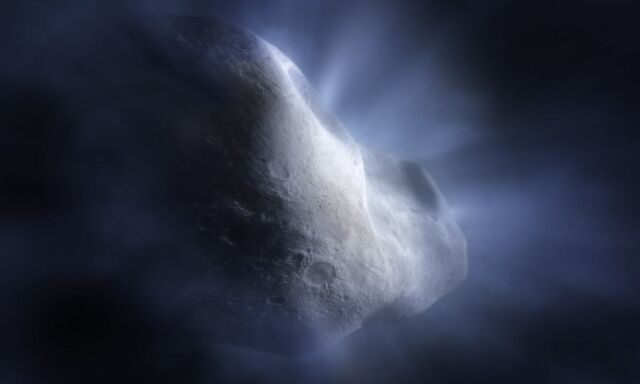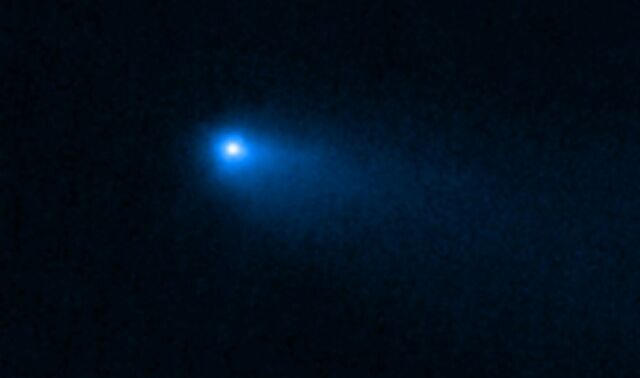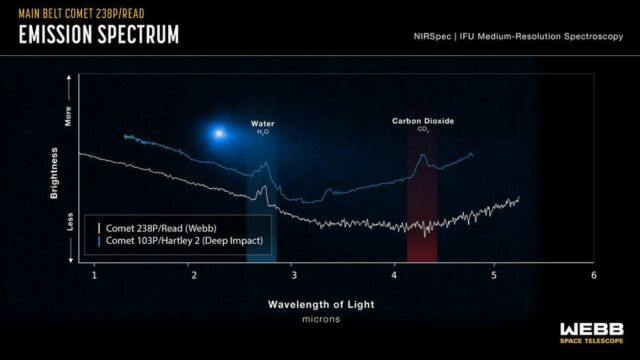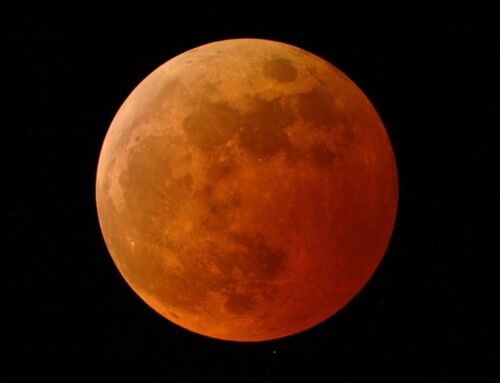
Is this where Earth got its water from? NASA’s James Webb Space Telescope has detected water in a rare main-belt comet.
This new finding of the Webb Space Telescope marks the first-ever detection of water within a comet located in the asteroid belt, an area between Mars and Jupiter.
Above image: This artist’s concept of Comet 238P/Read shows the main belt comet sublimating—its water ice vaporizing as its orbit approaches the Sun. Credits: NASA, ESA

This image of Comet 238P/Read was captured by the NIRCam (Near-Infrared Camera) instrument on NASA’s James Webb Space Telescope on September 8, 2022. It displays the hazy halo, called the coma, and tail that is characteristic of comets, as opposed to asteroids. The dusty coma and tail result from the vaporization of ice as the Sun warms the main body of the comet. Credits: NASA, ESA, CSA, M. Kelley (University of Maryland). Image processing: H. Hsieh (Planetary Science Institute), A. Pagan (STScI)
Main belt comets are considered unique as they originate from a region primarily known for rocky asteroids. The presence of water in these comets challenges previous assumptions about the availability of water in the early solar system.

This graphic presentation of spectral data highlights a key similarity and difference between observations of Comet 238P/Read by the NIRSpec (Near-Infrared Spectrograph) instrument on NASA’s James Webb Space Telescope. Credits: NASA, ESA, CSA, and J. Olmsted (STScI)
This discovery will shed light on the origin and evolution of water-bearing objects, providing valuable insights into the formation of the Earth’s oceans and the potential for habitability in other planetary systems.
source NASA





Leave A Comment